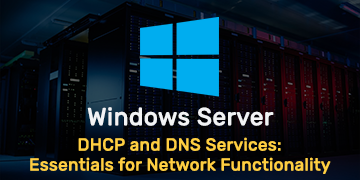Home » Enhancing Windows Server Security: Active Directory Best Practices
Enhancing Windows Server Security: Active Directory Best Practices
In the ever-evolving landscape of cybersecurity, enhancing Windows Server security is a top priority. One of the cornerstones of server security is Active Directory, a crucial component for managing user accounts and network resources. In this post, we’ll delve into the best practices to boost Windows Server security through effective Active Directory management.
Implement Strong Authentication
Your first line of defense is strong authentication. Ensure that your Active Directory environment enforces robust password policies and consider implementing Multi-Factor Authentication (MFA) to add an extra layer of security.
Regularly Update and Patch
Cyber threats are constantly evolving, and so should your security measures. Keep your Windows Server and Active Directory up to date with the latest patches and security updates to protect against vulnerabilities.
Audit and Monitor User Activities
Proactively monitor user activities within Active Directory. Regularly review logs and employ auditing to detect suspicious or unauthorized activities promptly.
Implement Role-Based Access Control (RBAC)
Role-Based Access Control (RBAC) is an effective way to limit access to resources. Assign permissions based on job roles, following the principle of least privilege (PoLP) to ensure users only have access to what they need.
Backup and Disaster Recovery
Develop a robust backup and disaster recovery plan for Active Directory. Regularly back up critical AD components to ensure quick recovery in case of data loss or system failures.
Secure Administrative Accounts
Admin accounts are high-value targets for attackers. Isolate administrative accounts from regular users and employ secure administrative practices to protect against credential theft.
Secure Communication
Use encryption protocols like SSL/TLS for securing communication between Active Directory components and client devices, preventing eavesdropping.
Regular Security Training
Invest in cybersecurity training for your IT staff and users. Educate them about the latest threats, social engineering, and best practices to recognize and respond to security incidents.
Implement Group Policies
Leverage Group Policies to enforce security settings across your network. This ensures consistent security configurations on all connected devices.
Enhancing Windows Server security through Active Directory best practices is an ongoing commitment. By implementing these tips and best practices, you can safeguard your network, user accounts, and sensitive data effectively. Remember that cybersecurity is a collective effort, and staying vigilant and proactive is key to protecting your Windows Server environment in the ever-evolving digital landscape.
Recent posts

DHCP and DNS Services: Essentials for Network Functionality
Explore the critical roles of DHCP & DNS in networks, enabling efficient IP address management and domain name resolution.

Understanding File and Storage Services in Windows Server
Explore Windows Server’s File & Storage Services for efficient data management, storage, and sharing within networks.

Exploring Active Directory: Core Functionality and Benefits
Discover the fundamentals and advantages of Active Directory for efficient user management and network administration.











